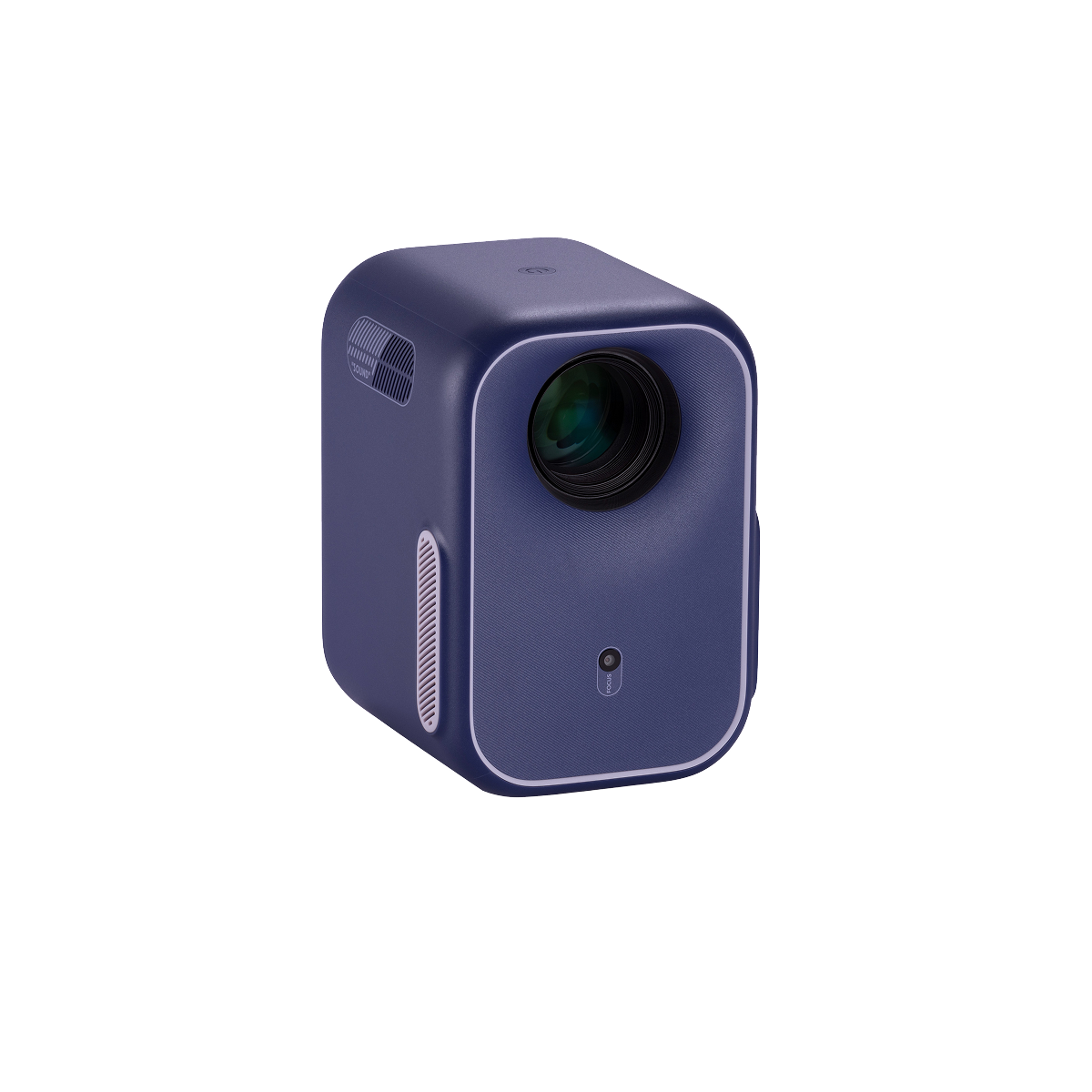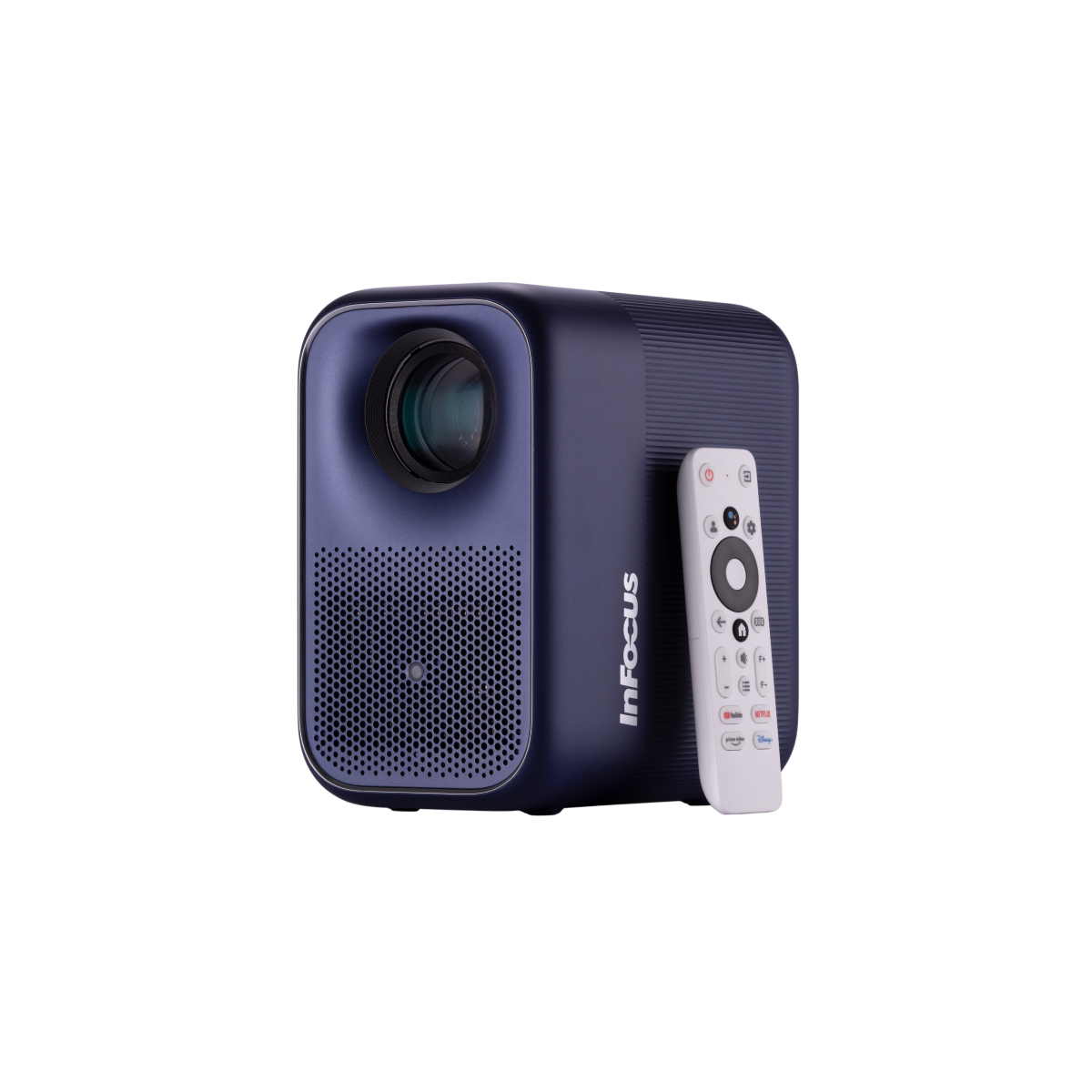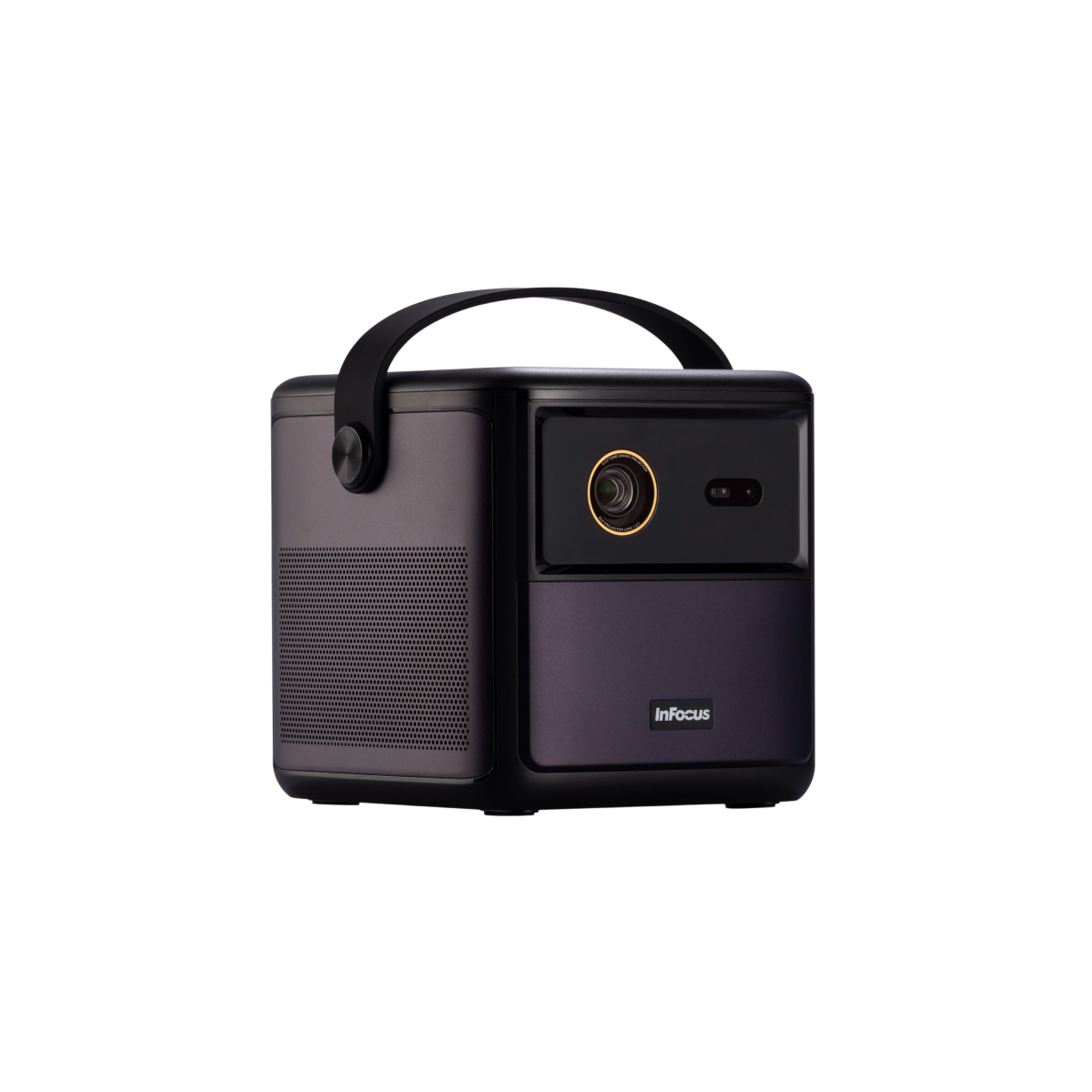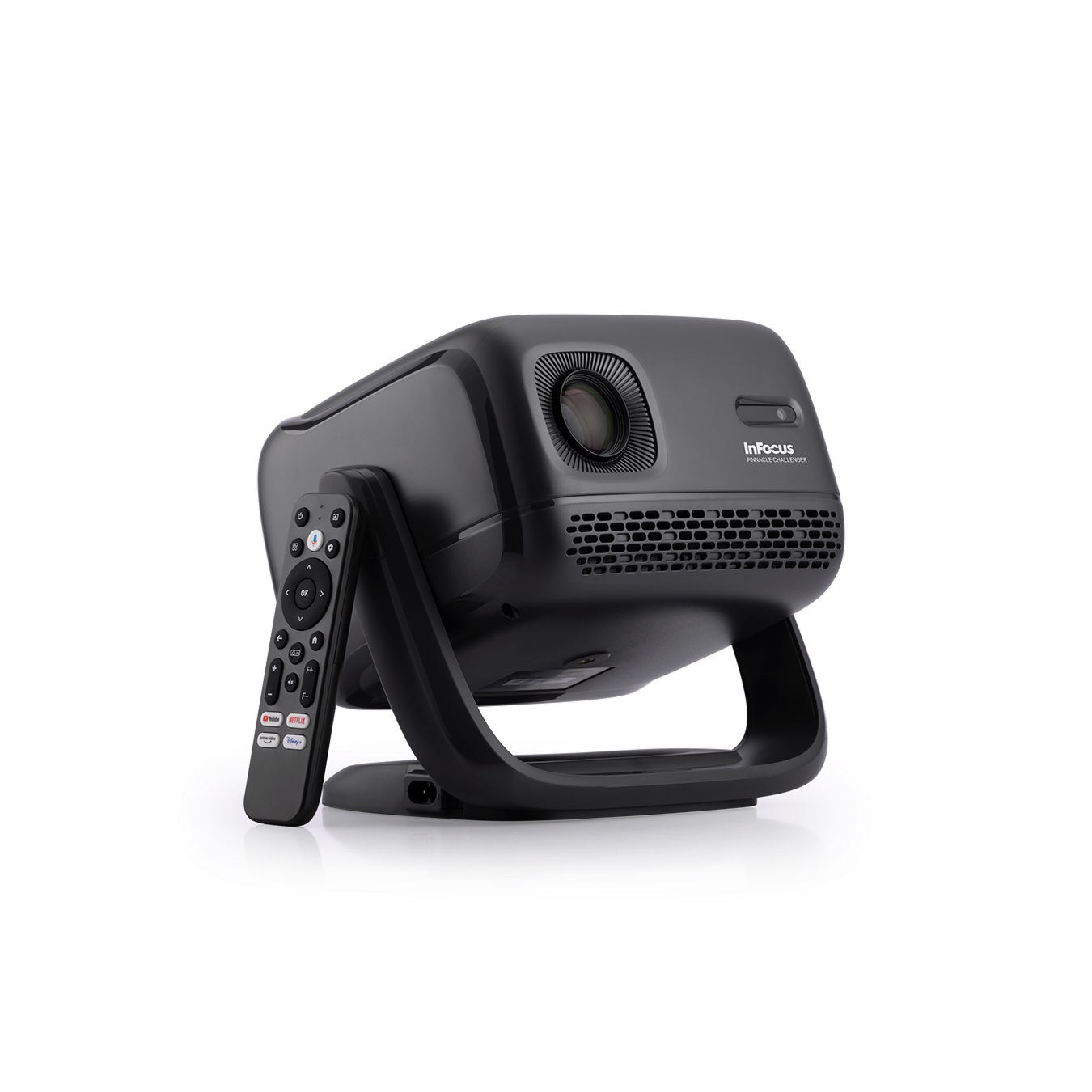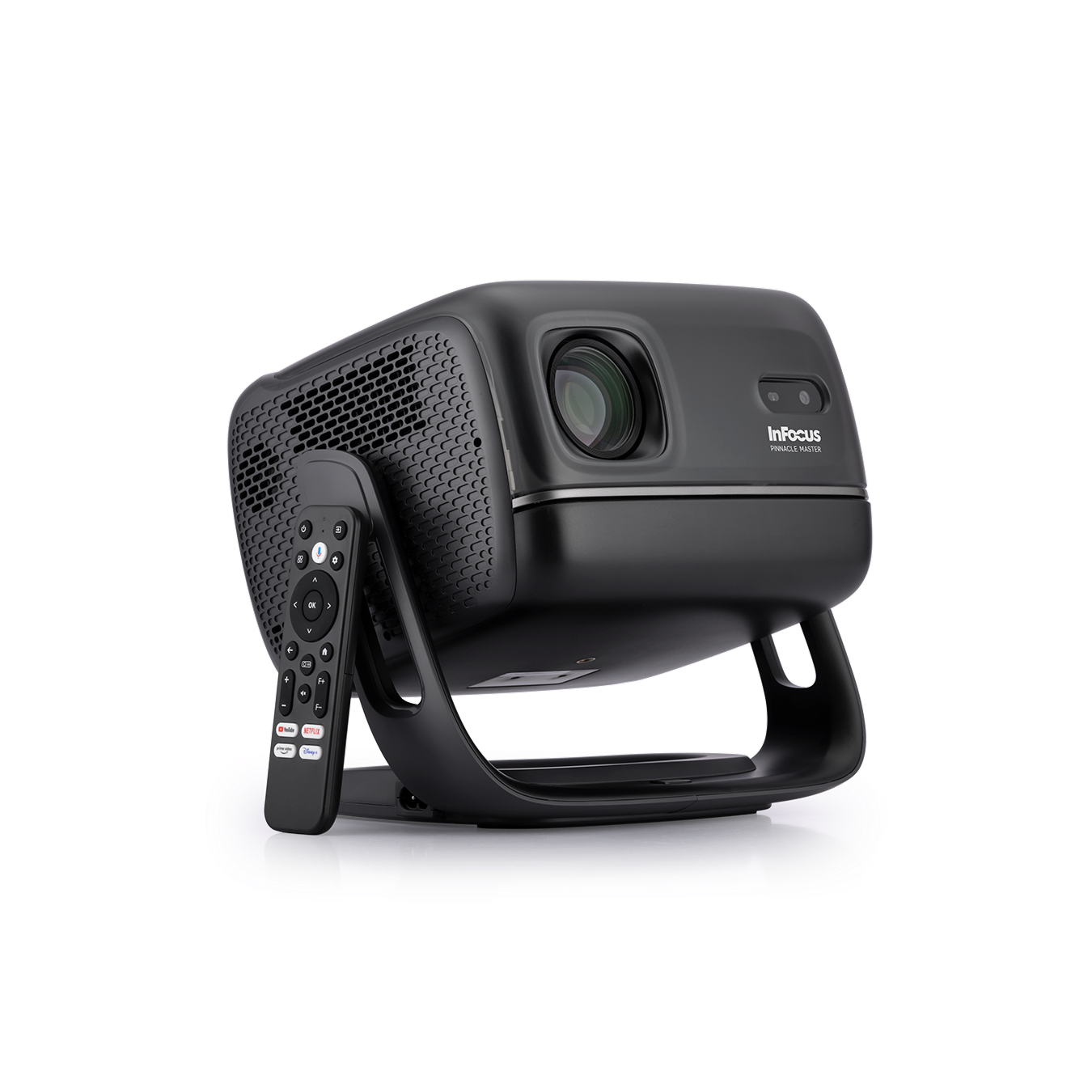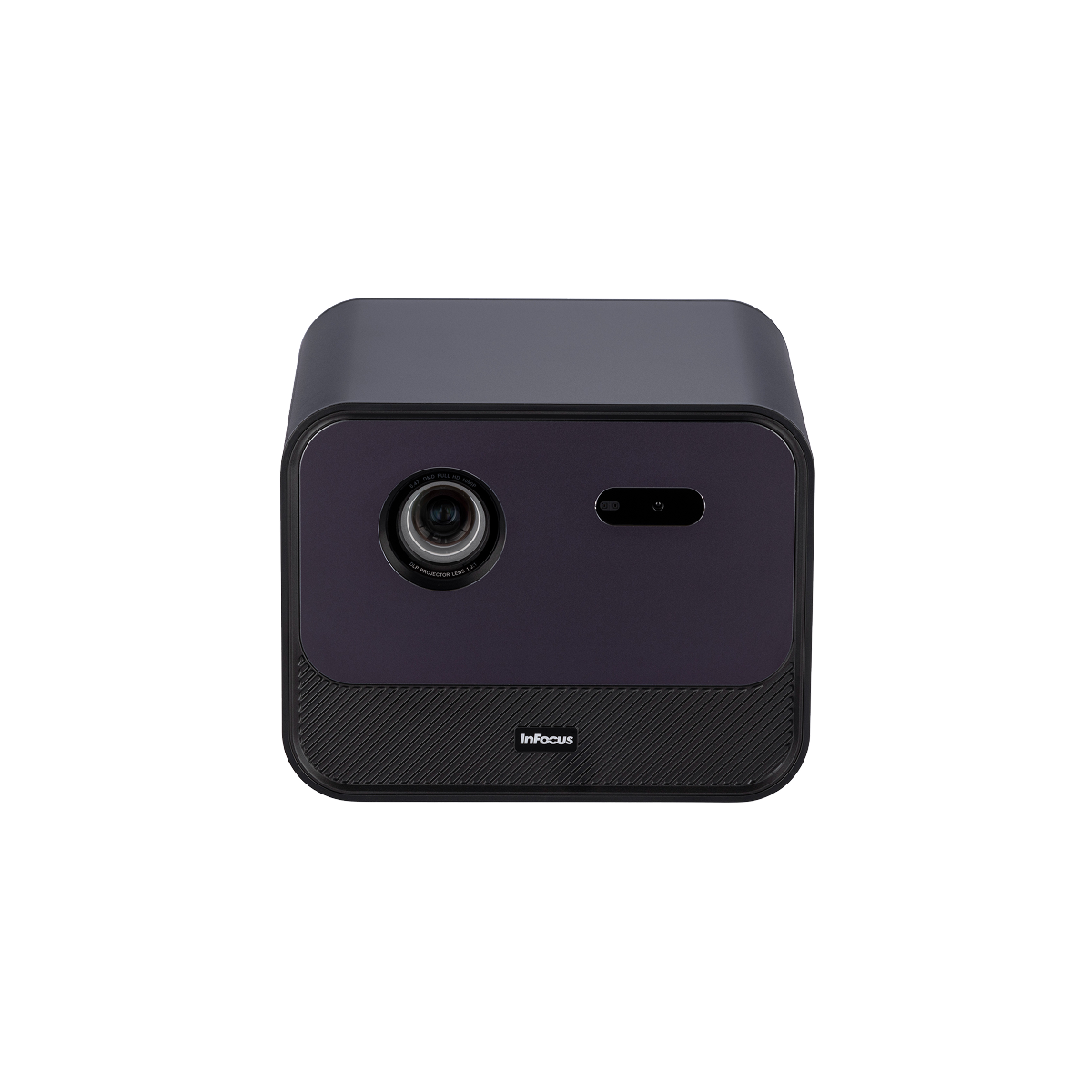FAQ for Lifestyle and Home Projectors
This FAQ covers key aspects of lifestyle and home projectors, including projection technologies like DLP vs. LCD, illumination sources such as lamp vs. laser vs. LED, native resolution, native contrast ratio, lumens (ISO and ANSI), connectivity ports, throw ratios, and zoom types (digital vs. optical).
DLP (Digital Light Processing) uses microscopic mirrors on a chip to reflect light and create images, often with a color wheel for color production. It’s known for sharp images, high contrast, and reliability in dusty environments.
LCD (Liquid Crystal Display) uses liquid crystal panels to filter light from a source, passing it through red, green, and blue panels to form images. It’s valued for bright output and accurate colors but may require more maintenance due to dust sensitivity.
DLP offers better contrast, sharper images, lower cost in some models, and sealed optics that reduce dust issues. It’s often lighter and more portable.
DLP can suffer from the “rainbow effect” (color flashes in fast scenes) and may have slightly less color accuracy than LCD.
LCD provides higher brightness, better color saturation, and no rainbow effect, making it ideal for well-lit rooms.
LCD projectors may show a “chicken wire” effect up close, cost more, and degrade over time due to organic components.
Lamp-based projectors use high-pressure xenon or metal-halide lamps as the light source, providing high brightness but requiring periodic replacement after 3,000-5,000 hours.
Laser projectors use solid-state lasers for light, offering up to 20,000+ hours of life, instant on/off, consistent brightness, and better color accuracy without lamp replacements.
LED projectors use light-emitting diodes for illumination, lasting 20,000+ hours, energy-efficient, and providing vibrant colors, though often less bright than lasers.
Lasers last longer (up to 20,000 hours), use less power, produce less heat, and maintain brightness without degradation, reducing maintenance costs.
Lasers are more expensive upfront and may not reach maximum brightness instantly in some models.
LEDs are energy-efficient, have long lifespans (20,000+ hours), run cooler, and offer better color saturation without mercury.
LEDs may provide lower brightness in some models, making them less suitable for very large screens or bright rooms.
Lamps are cheaper initially and can achieve high brightness levels, but they require frequent replacements.
Native resolution is the fixed number of pixels a projector can display without scaling, such as 1920x1080 (Full HD) or 3840x2160 (4K), determining image sharpness.
Higher native resolution provides crisper details, especially for movies and gaming, matching content like 4K Blu-rays for optimal quality.
For casual use, Full HD (1080p) is sufficient; for premium home theater, 4K UHD is ideal for immersive viewing.
Native contrast ratio measures the difference between the brightest white and darkest black a projector can produce without enhancements, like 1000:1.
Higher native contrast delivers deeper blacks and more vibrant images, essential for dark scenes in movies.
Aim for at least 2000:1; premium models can exceed 100,000:1 for lifelike visuals.
ANSI lumens measure projector brightness using a standardized method by the American National Standards Institute, indicating light output.
ISO lumens are a similar brightness measure based on International Organization for Standardization, often comparable to ANSI but with slight methodology differences.
Both measure brightness, but ANSI uses a checkerboard pattern, while ISO focuses on consistent output; they’re often used interchangeably for comparison.
1,000-2,000 lumens are sufficient for dark rooms to avoid washed-out images.
2,500-3,500+ lumens to combat light from windows or lamps.
Common ports include HDMI, USB, VGA, Component, and sometimes DisplayPort or wireless options like Bluetooth.
HDMI supports high-definition video and audio, essential for connecting Blu-ray players, gaming consoles, and streaming devices.
USB ports allow direct playback of media files or powering devices like streaming sticks.
Throw ratio is the distance from projector to screen divided by image width, e.g., 1.5:1 means 1.5 feet distance per foot of width.
Standard throw ratios (1.2-2.0:1) require more distance, suitable for larger rooms.
Short throw (0.5-1.0:1) allows large images from close distances, ideal for small spaces.
Ultra-short throw (under 0.5:1) projects from inches away, great for lifestyle setups like living rooms.
Digital zoom enlarges images electronically, potentially reducing quality by cropping pixels.
Optical zoom adjusts the lens physically for magnification without quality loss, offering flexibility in placement.
Optical zoom maintains sharpness and detail, while digital can cause pixelation.
It degrades image quality as it interpolates pixels, unsuitable for high-detail content.
Search by brand on dealer sites; lamps typically last 3,000-5,000 hours.
Use comparison tools to evaluate specs like brightness, resolution, and features side-by-side.
Use feature search filters for aspects like resolution, brightness, or zoom.
Use a projection calculator to determine optimal placement based on screen size and ratio.
Brightness is measured in lumens, with white and color brightness specs.
Color brightness may be lower, affecting vibrant image quality.
Keystone correction adjusts distorted images caused by off-angle projection.
Lens shift allows physical adjustment of the image position without moving the projector.
Rec. 709 is a standard for HD content ensuring consistent colors across devices.
Some do, mainly for audio output; not for video streaming.
Yes, via streaming devices like Fire Stick connected to HDMI.
Yes, using wireless dongles or apps via HDMI.
Brief color flashes in fast-moving scenes, visible to some users.
LED or laser for longevity; consider room size and light.
Resolution, brightness, contrast, throw distance, connectivity, lamp life, audio, keystone, and features like 3D.
Common ratios are 4:3, 16:9 (widescreen), or 2.35:1 for cinema.
Higher lumens combat ambient light for clearer images.
Input lag is response time; low lag (under 16ms) is crucial for gaming.
Portable models with 3,000+ lumens and battery power.
3,000-5,000 hours for lamps; 20,000+ for LED/laser.
Allows viewing 3D content with compatible glasses; common in DLP models.
High Dynamic Range enhances contrast and color for realistic images.
Use throw ratio: screen width = distance / ratio.
Combines multiple projectors for seamless large images.
Simulates medical imaging for accurate grayscale display.
Displays multiple sources side-by-side.
It washes out images; use brighter projectors or light-control screens.
$300-$1,000 for entry-level; $1,000+ for premium 4K.
Projectors offer larger screens at lower cost but need dark rooms.
Measured in dB; quieter models (under 30dB) are better for home use.
Use ceiling mounts for permanent setups; ensure proper ventilation.
Lightweight, battery-powered models for easy movement or outdoor use.
Built-in apps for streaming like Netflix, often with Android TV.
Larger rooms need higher lumens and longer throw; small rooms suit short throw.
A spinning wheel that filters light for colors; can cause rainbow effect.
Liquid Crystal on Silicon, a hybrid for high contrast and detail, used in premium models.
Very efficient, using less power than lamps and producing less heat.
Regular filter cleaning to prevent dust buildup.
Yes, if native or supported via pixel shifting; ensure HDMI 2.0 compatibility.
Rapidly shifts pixels to simulate 4K resolution from lower native chips.
Use audio out ports, HDMI ARC, or Bluetooth if available.
Varies; many have basic speakers, but external systems are recommended for home theater.
Automatically adjusts image shape for angled projections.
Motion Estimation Motion Compensation smooths fast action in sports or games.
Overheating reduces lifespan; ensure good ventilation.
Reduces brightness and fan speed for energy savings and longer lamp life.
Laser models with low blue light are better; avoid direct eye exposure.
Typically 20,000-30,000 hours, far exceeding lamps.
Match gain to brightness; ambient light rejecting for lit rooms.
Reflectivity measure; higher gain brightens images but narrows viewing angle.
Yes, with low lag models; look for game modes.
Measures frame updates per second; 60Hz+ for smooth motion.
Use Wi-Fi, Miracast, or dongles for screen mirroring.
Allows touch or pen input on projected surfaces.
Enables projection in any orientation, useful for creative setups.
FOFO measures full white vs. black; ANSI uses a checkerboard for real-world accuracy.
At least 4,000 lumens to overcome sunlight.
Enhances color accuracy for vibrant, true-to-life images.
Yes, with compatible mounts; check weight and ventilation.
Visible noise in dark areas from pixel averaging; less in newer models.
Use eco mode or choose quieter models with advanced cooling.
1.5-2 times the screen diagonal for comfort.
Some are, with high brightness and connectivity, but home models prioritize entertainment.
Clean filters, replace lamps as needed, and monitor usage hours.
